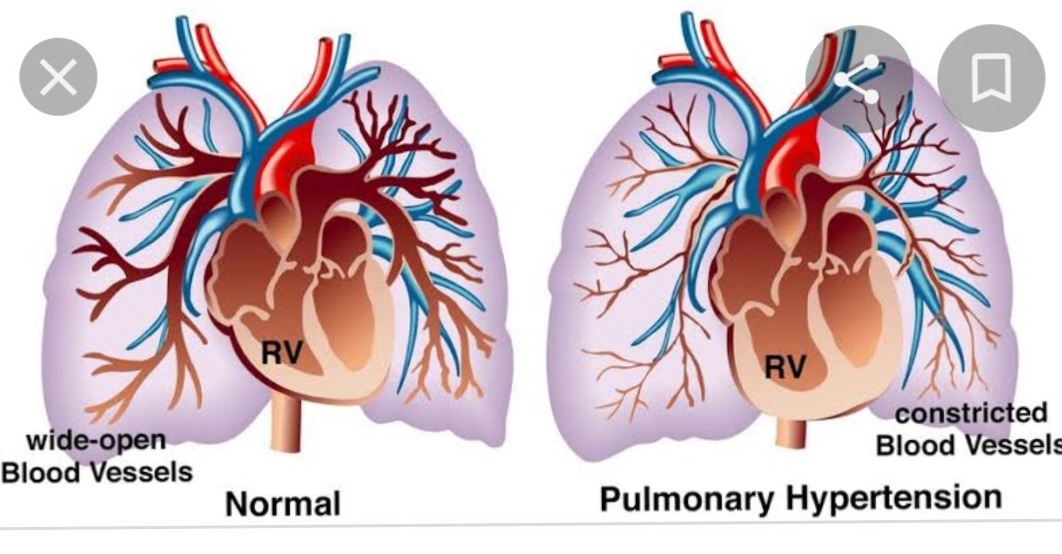What is the best weight reduction-various aspects-
The most effective weight loss involves a slow, sustainable change in lifestyle that incorporates a healthy diet and regular exercise.
Diet
Increase your intake of fruits and vegetables
Consume whole grains such as brown rice, barley, and whole-wheat bread
Include healthy fats like olive oil, avocados, and nuts in your diet
Reduce added sugars, salt, and refined grains
Opt for low-fat or fat-free dairy options
Select fresh foods over processed items
Stay hydrated by drinking plenty of water


Exercise
Engage in a minimum of 150 minutes of physical activity each week
Consider swimming, which is gentle on your joints and works your entire body
Other tips
Avoid attempting crash diets
Implement gradual, lasting changes
Maintain a journal to track your food intake and weight
Discuss your plan with someone you can rely on
Work on managing your stress
One effective method for reducing body fat is by engaging in consistent aerobic exercise, like brisk walking. Gradually increase your aerobic exercise to a minimum of 30 minutes on most days of the week. Some individuals may require more exercise than this to shed pounds and maintain their weight loss. Additionally, strive to incorporate strength training exercises at least twice each week.
What is the most effective diet for weight loss? It’s a question that many individuals ponder once they realize they need to lose some weight—what is the most effective diet for weight loss? While this question is reasonable, it often suggests an approach that is less than ideal, which involves planning to implement a highly restrictive eating pattern temporarily, until the weight is lost, and then reverting to previous eating habits. Rather than opting for “fad diets,” individuals who have successfully lost weight—and maintained that loss—tend to have made a lasting transition towards healthier eating practices. Merely swapping unhealthy foods for healthier alternatives—not for a few weeks, but permanently—will assist you in achieving weight loss while also providing various additional benefits. Thus, a more insightful set of questions could be, “What constitutes a healthy diet? What are the characteristics of a healthy diet? ”
A healthy diet prioritizes natural, unprocessed foods as opposed to pre-packaged meals and snacks. It is well-balanced, meaning that it supplies your body with all the nutrients and minerals it requires for optimal functioning. It focuses on plant-based foods—particularly fruits and vegetables—more than on animal products. It is rich in protein. It is low in sugar and salt. It includes “healthy fats” such as fish, olive oil, and other oils derived from plants.
Below are several examples of nutritious meals for weight loss. For breakfast, enjoy a bowl of bran flakes topped with sliced strawberries and walnuts alongside nonfat milk. For lunch, opt for a turkey sandwich on whole wheat with assorted vegetables and a dressing made of olive oil and vinegar. For dinner, consider a salmon steak served on a bed of spinach.
You don’t need to eliminate snacks to maintain a healthy diet, either. Nutritious snacks for weight loss can include almonds or pistachios, string cheese accompanied by an apple, Greek yogurt, or a banana served with peanut butter.
Before embarking on your weight-loss journey, take some time to think about the types of healthy foods you like so that you can have a wide range of options when planning your meals and snacks. Keep in mind that the most effective diet is one that you will adhere to, so avoid hastily purchasing numerous “health foods” that you know you’ll never consume.
What’s the healthiest diet?
There isn’t a definitive diet that nutritionists have classified as “the healthiest. ” Nonetheless, there are multiple dietary patterns that specialists have either created for optimal health or have noted to be beneficial when traditionally followed by various populations worldwide. These dietary styles generally share certain characteristics—they are often plant-based diets, highlight healthy fats, avoid simple sugars and low sodium, and prefer natural foods over the highly processed options common in a large portion of the Western diet.
For instance, the Mediterranean style diet derives its name from the foods accessible to different cultures situated around the Mediterranean Sea. It places significant focus on minimally processed fruits, vegetables, legumes, nuts, and whole grains. It features moderate quantities of yogurt, cheese, poultry, and fish. Olive oil serves as its main cooking fat. Red meat and sugary foods are consumed infrequently. Aside from being an effective weight-loss approach, adhering to a Mediterranean style diet is associated with a reduced risk of heart disease, diabetes, depression, and certain types of cancer.
Experts formulated the DASH diet (Dietary Approaches to Stop Hypertension) specifically to promote heart health. The variety of food types included in the diet appears to work particularly well together to lower blood pressure and mitigate the risk of heart failure. The primary aspects of DASH are low cholesterol and saturated fats, abundant magnesium, calcium, fiber, potassium, and minimal to no red meat and sugar. Understandably, this aligns with a food list similar to that of the Mediterranean diet—whole grains, vegetables, fruits, fish, poultry, nuts, and olive oil.
As indicated by its name, the MIND diet (Mediterranean-DASH diet Intervention for Neurodegenerative Delay) was created by doctors to incorporate elements from the Mediterranean and DASH diets that showed advantages for brain health and the prevention of dementia and cognitive decline. In practice, it closely resembles both the Mediterranean and DASH diets, but it places a stronger focus on leafy green vegetables and berries, while emphasizing less on fruit and dairy.
In recent times, the Nordic diet has surfaced as both a weight-loss and health-maintenance solution. Grounded in Scandinavian eating habits, the Nordic diet highlights fish, apples, pears, whole grains like rye and oats, and cold-climate vegetables such as cabbage, carrots, and cauliflower. Research has backed its effectiveness in stroke prevention and weight reduction.
What do all of these diets share in common? They are all beneficial for your heart, they all comprise natural unprocessed foods, and they all incorporate a variety of plant-based meals. Eating for your health—particularly your heart health—by integrating aspects from these diets is a wise method to lose weight.
What is intermittent fasting?
You may have come across some motivating success stories regarding intermittent fasting. But is fasting healthy, and does intermittent fasting yield results?
Fasting—avoiding food for a certain duration—is an age-old practice that is considered safe when not pushed to extremes. Historically, the advantages of fasting have been both spiritual and physical in nature. Individuals who engage in fasting for religious purposes frequently report heightened concentration on spiritual issues during the fast. From a physical standpoint, a straightforward fast decreases blood sugar, alleviates inflammation, enhances metabolism, eliminates toxins from damaged cells, and has been associated with a reduced risk of cancer, less pain from arthritis, and improved brain function.
Intermittent fasting refers to splitting one’s time between “eating windows” and intervals of abstinence regularly. A typical intermittent fasting plan might limit eating to the timeframe of 7:00 a. m. to 3:00 p. m. , with the rest of the day dedicated to fasting for 16 hours. However, there isn’t a specific, set schedule. Some individuals have varying eating windows, adhering to the guideline of not eating after, for instance, 8:00 p. m. —or, on a much stricter side, permitting themselves to eat only every other day.
The science behind intermittent fasting revolves around modifying the body’s metabolism. During a fasting phase, insulin levels decrease to a point where the body starts utilizing fat as energy. Furthermore, the idea suggests that by reducing the body’s metabolic rate, your appetite diminishes, leading you to consume fewer calories once you start eating again.
A multitude of studies has shown the advantages of intermittent fasting concerning weight reduction. Nevertheless, it remains uncertain whether it is more effective than merely limiting calorie intake while adhering to a conventional eating timetable. One potential explanation for the efficacy of intermittent fasting is that many practitioners have abandoned the habit of late-night eating. Limiting food intake to earlier in the day better aligns with our body’s natural circadian rhythms and is less likely to result in fat storage. Since intermittent fasting can be challenging for numerous individuals to maintain, a sensible alternative might be to adopt a low-calorie Mediterranean diet and cease eating in the late afternoon.
For update on further important health related topics and frequently asked questions on health topics by general population please click on the link given below to join our WhatsApp group –
https://chat.whatsapp.com/Lv3NbcguOBS5ow6X9DpMMA
Certain individuals should avoid attempting intermittent fasting without consulting their physician first, including those with diabetes or heart-related issues.
Intermittent fasting represents a highly “lifestyle-intensive” dietary approach, signifying that it can be hard to sustain amid typical social interactions. If family members are dining while you are fasting, you may feel tempted to indulge or abandon the family-meal habit. If your profession requires meals with clients or coworkers, following an intermittent fasting routine might prove challenging. Keep in mind that the most effective healthy eating strategy is the one you can adhere to over time.
What is a high-fat weight loss diet?
It may seem paradoxical, but a lot of individuals achieve weight loss success—particularly in the beginning—by increasing their fat intake, not decreasing it. Known as a ketogenic or Keto diet, this approach entails transferring the primary source of calories to fatty foods—between 75% and 90% of your consumption, with only 10-20% of your calories derived from protein and a mere 5% from carbohydrates. The idea is that by consuming a significant amount of healthy fats and limiting carbohydrates, you enter a modified metabolic condition where you compel your body to start depending on fat for energy, utilizing your fat reserves instead of sugar for fuel.
Evidence does indicate that keto is an efficient method to kick start weight loss and enhance blood-sugar levels. Nonetheless, it is challenging to sustain, and so far, we lack extensive long-term research showing it to be a viable eating pattern for maintaining weight loss.
What does a Healthy Eating Plate resemble?
As both weight loss and overall wellness connect to fundamental dietary patterns, we have created the Harvard Healthy Eating Plate as a guideline for meal planning and for achieving a balanced diet. Visualize a circular dinner plate with a vertical line down its center evenly splitting it in two. One half of the plate should be occupied by equal portions of whole grains (not refined grains like white bread and white rice) and healthy protein (such as fish, nuts, beans, and poultry—not red meat or processed meats). Two-thirds of the opposite half should comprise vegetables, with the remaining section consisting of fruit. Aim to incorporate a wide variety into this half of your plate (or half of your diet)—consume fruits in various colors and vegetables of all kinds (but do not consider potatoes or French fries as vegetables).
On one side of the plate, envision a glass of water, as that is the optimal beverage for weight loss and general health (At certain meals, you can swap coffee or tea with minimal or no sugar). Limit your intake to one or two servings of milk each day.
On the other side of the plate, imagine a container of healthy oils such as canola or olive oil. Utilize it for cooking or at the dining table instead of butter.
Keep the Healthy Eating Plate in mind when deciding what to eat for a particular meal, when grocery shopping, or when devising a plan for losing weight and preventing its return. Following its principles will enhance your chances of staying healthy and maintaining an ideal body weight.
Best Exercises for Weight Loss
Exercise? Me?
Shedding pounds occurs through not only adjusting your dietary habits but also increasing your physical activity. Consistent exercise will significantly contribute to reaching your objectives. To shed weight, you should strive for a minimum of 300 minutes of moderately intense activity weekly. Below are some workouts that can assist you on that path. Just keep in mind to first consult your physician regarding which ones may be most suitable for you.
Walking
If you were to incorporate an additional half hour of brisk walking into your daily schedule, you might burn approximately 150 extra calories compared to your usual daily expenditure. The quicker and longer your walking sessions, the higher the number of calories you burn. Walking is an excellent choice if you are just beginning to engage in regular exercise. Begin with shorter distances and gradually progress to longer, more vigorous ones.
Jumping Rope
If you’re in search of an inexpensive item of exercise gear that you can bring while traveling, a jump rope could be ideal for you. Skipping rope is an excellent method to quickly burn calories. Indeed, you will eliminate more calories by skipping rope than by walking on a treadmill for the equivalent duration. You will also engage various muscle groups, including your core and both upper and lower body. Additionally, jumping rope can enhance your coordination.
High-Intensity Interval Training (HIIT)
High-intensity interval training (often referred to as HIIT) is a form of exercise that alternates between high-intensity physical exertion and lower-intensity activity. It is not advisable to perform it daily, although it is highly effective for weight loss. With HIIT, you will expend more calories compared to steady-state cardio. The vigorous activity maintains your body in a calorie-burning state for as long as 24 hours following the conclusion of your workout.
Cycling
Cycling is an excellent method for weight loss, and it’s a low-impact, versatile form of exercise. Depending on your weight, speed, and the kind of cycling you engage in, you can burn approximately 400-750 calories each hour while biking.
Swimming
It can be challenging to have the motivation to exercise if your knees are painful or your back is sore. If you’re experiencing that situation, swimming is a perfect form of exercise. It’s gentle on your joints, you will engage both your upper and lower body, and you will achieve a solid cardio workout. You will also benefit from the resistance provided by the water. If you swim for thirty minutes several times a week, you will decrease your risk of heart disease, stroke, type 2 diabetes, and certain cancers. It will also lower your bad cholesterol and blood pressure.
Strength Training
This form of exercise employs resistance to develop strength and muscle. It aids in weight loss and also assists in maintaining weight by increasing muscle mass. This will enable your body to burn additional fat. Aim to engage in strength training 3-5 times weekly, for approximately an hour each session. Remember to take a day off after every 2 days that you perform it.
Pilates
Studies indicate that Pilates — workouts typically performed on a mat or with different equipment focusing on core stability — can enhance your strength and assist you in maintaining a healthy weight. The level of intensity in a Pilates class varies according to your individual requirements. You can discover some classes or demonstrations either online or at your nearby gym.
Jogging
Jogging is a form of aerobic exercise — it utilizes oxygen. This may assist you in shedding pounds. A beneficial jog can also elevate a factor known as your metabolic rate for as long as 24 hours. Therefore, you’ll remain in fat-burning mode even after you’ve completed your daily goal. When done consistently, jogging can aid in enhancing your metabolism for an extended duration.
Yoga
This is an activity that merges physical exercise with meditation. It’s a well-liked method to engage in mindfulness following a lengthy workday, as well. However, the advantages extend beyond that. Studies indicate that over time, individuals who are overweight and practice yoga a minimum of once weekly for 30 minutes tend to lose weight and achieve lower BMIs. People who practice yoga are also more conscious about their eating habits, signifying they are more inclined to recognize when they are genuinely hungry and when they are satiated.
Stair Climbing
Another affordable and adaptable workout for shedding pounds is stair climbing. While you can opt for a machine, all you truly require for this activity is a dependable set of stairs. Ascending merely two flights of stairs on a daily basis can result in a loss of 6 pounds over the course of a year. Additionally, it can increase the level of beneficial cholesterol in your bloodstream and assist in maintaining the health of your joints, muscles, and bones.
Hiking
If you are seeking a more adventurous method for shedding pounds, hiking may be the option for you. It generally consists of walking in natural settings and navigating the barriers around you, such as tree roots and stones. Hiking can result in weight reduction, particularly if you engage in it frequently.
For update on further important health related topics and frequently asked questions on health topics by general population please click on the link given below to join our WhatsApp group –
https://chat.whatsapp.com/Lv3NbcguOBS5ow6X9DpMMA
Issued in public interest by –
www.entspecialistinnashik.com





